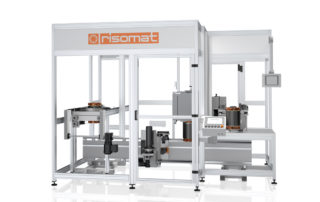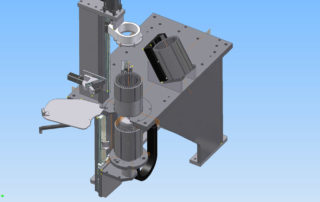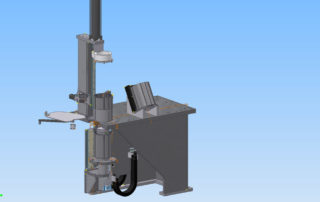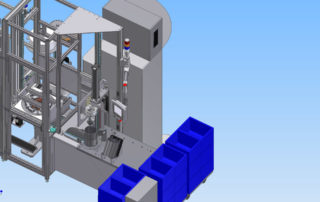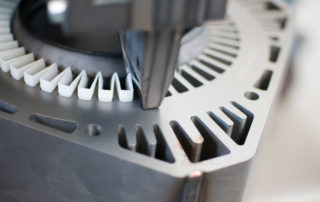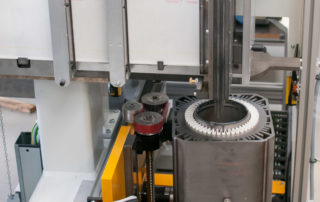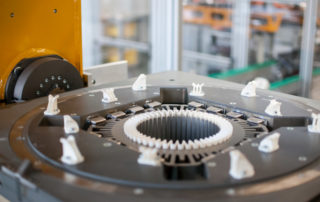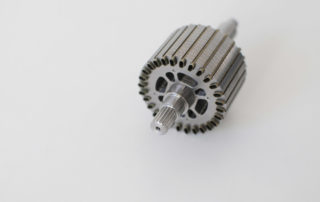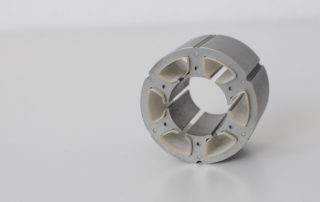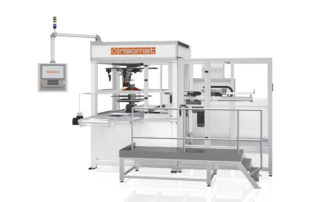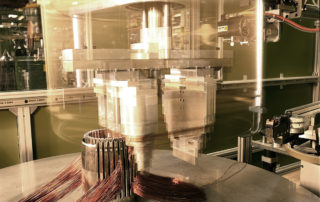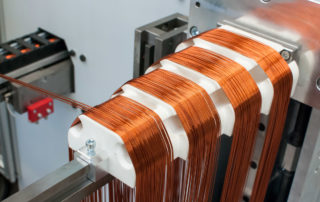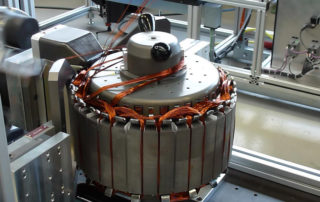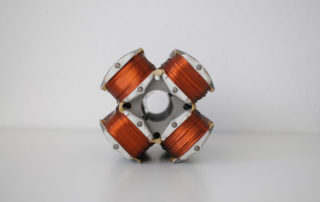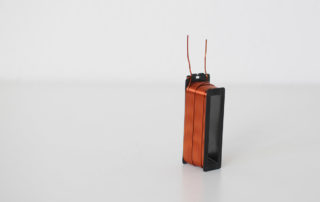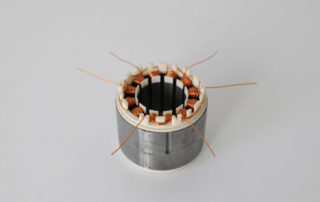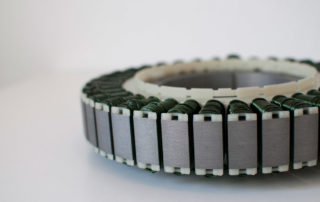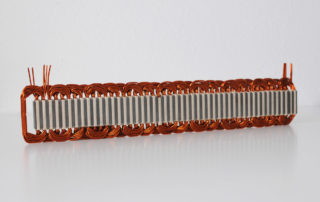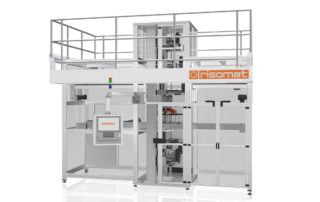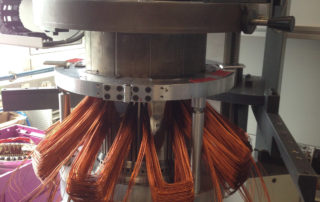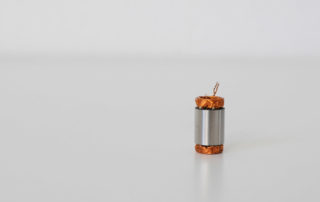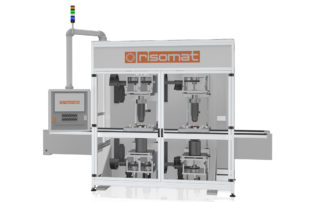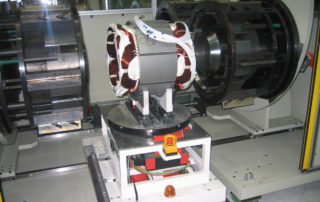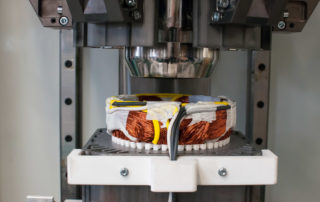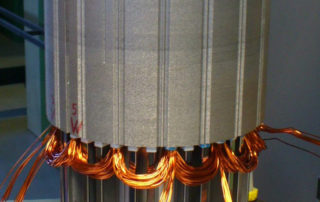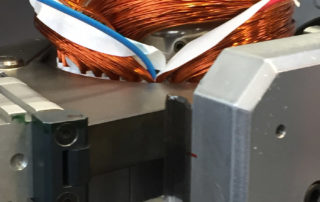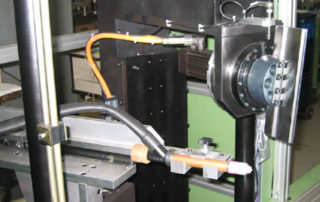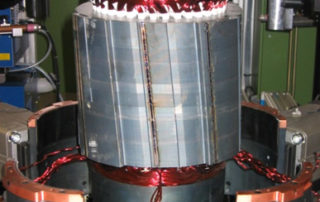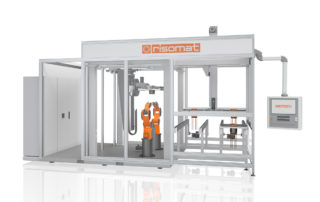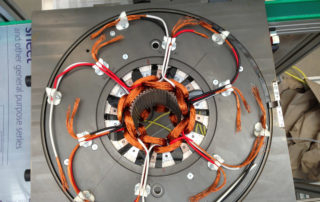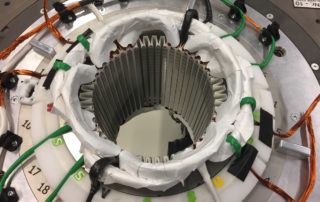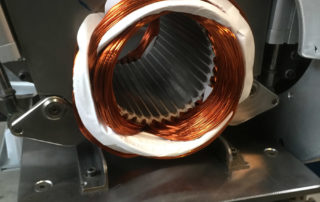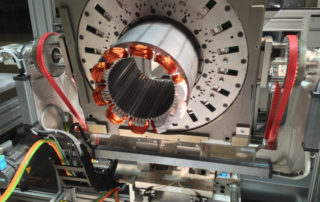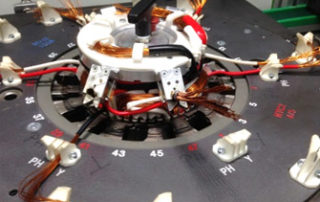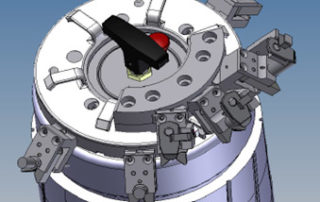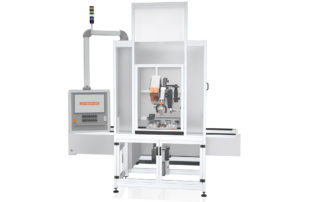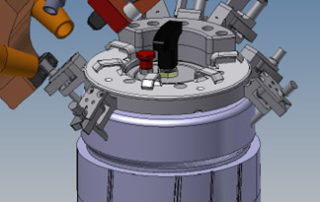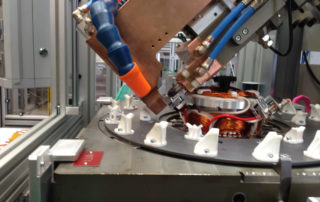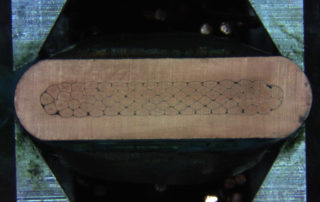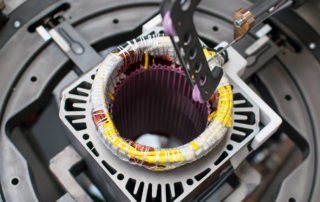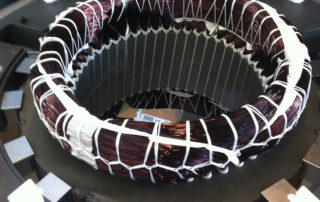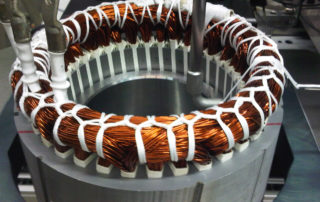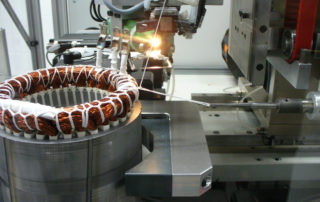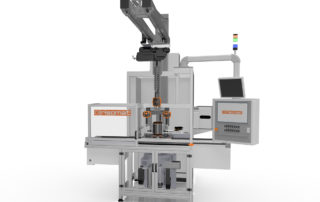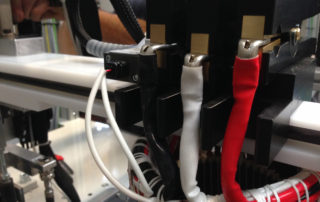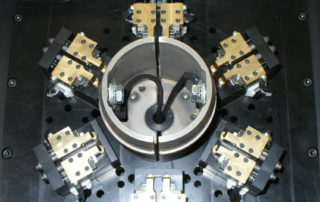You are here: Processes
PROCESSES AND PRODUCTION CONCEPTS AS REQUIRED
risomat covers the entire process of manufacturing stators and rotors
Thanks to its in-depth expertise, risomat masters the complete process chain for the production of stators and rotors.
Under the aspect of increasing automation and increasing quantities, the processes are constantly being further developed and optimized.
Process Steps
DESCRIPTION
During the packetize process the individual insulated sheets are stacked to a stator and then connected to each other by various methods such as welding, gluing or clamping. When stacking appropriate measures must be taken to ensure the parallelism and eccentricity of the stator.
TYPES
Paketise Machines
vertical and horizontal types
manual or automatic stacking
APPLICATIONS
generators
big motors
servomotors
rotors
ADVANTAGES
technical design which guarantees a perfectly stacked stator package
fast tool change
flexible use and parameterizable
DESCRIPTION
During the isolating process isolating materials are used in different geometries accurately in the stator to isolate the coils against the stator high voltage resistant. Here, different insulating materials are used, which must be reliably introduced into the grooves.
TYPES
Insulating machines for the following insulation geometries
U- Shape
V- Shape
S- Shape
B- Shape
Y- Form
box type
APPLICATIONS
inside grooved stators
external rotor
all-purpose motors
rotors
hairpin stators
flat pack
ADVANTAGES
easy ergonomic operation
fast tool change
flexible applicable and parameterizable
constantly high embossing quality
isolation of loose stacked sheets
recording the process parameters
automatic reloading of the insulating material
DESCRIPTION
The flyer, linear or needle winding method is used for winding coils for stator and rotor windings. risomat masters all the aforementioned winding methods. Which method is used project-specifically, is decided together with the customer on the basis of technical and economic criteria’s.
TYPES
flyer winding (horizontal/vertical
linear winding
needle winding
APPLICATIONS
distributed windings
concentrated windings
pulled coil
rotor windings
windings of externally grooved stators
ADVANTAGES
mastery of all common winding methods
selection of the most suitable winding method for the corresponding application
flexible applicable and parameterizable
junction-free winding
automatic wire change
automatic tool change
DESCRIPTION
The introduction of the pre-wound coils into the stator slots is accomplished by means of the risomat pull-in technology. Here, the objective is to collect the coils without damage in the grooves and to achieve the highest possible degree of filling. When pulling in the grooves are additionally closed automatically by means of slot wedges.
TYPES
inserter (vertical)
inserter with integrated slot wedges machine
inserter combined with a winding machine
APPLICATIONS
single-layer and two-layer windings
pre-packaged stators
loose sheets
big motors
generators
pump motors (PVC insulated wires)
ADVANTAGES
high groove fill factor (> 50%)
short winding head
insert loose stacked sheets
mild insertion process by moving blades
easy quick changeover
automatic tool change
DESCRIPTION
The drawn-in coils must be shaped or compacted in the region of the winding head, so that the subsequent pulling-in process can be carried out, or after the preforming the bonding or after the final shaping the bandaging can be carried out.
TYPES
intermediate forming
pre forming
final forming
APPLICATIONS
traction motors
pump motors (PVC insulated wires)
ADVANTAGES
high forming quality
fast tool change
flexible applicable and parameterizable
easy process-safe forming concept
automatic tool change
DESCRIPTION
In stators for generators and PSM machines, the sheets are skewed, so that the voltage or torque ripple can be kept as small as possible. risomat has developed a process whereby the stators can be set and welded after all coils are inserted.
TYPES
skewing-welding (horizontal)
forming-skewing-welding (vertical)
APPLICATIONS
generators
stators for PSM machines
ADVANTAGES
high flexibility due to programmability of all setting parameters
fast tool change
exact rectilinear setting of the stator laminations
exact concentricity of the stator bore
integration of several machining processes
DESCRIPTION
The coil lead, which is laid on the winding head, must be insulated by means of insulating hoses against high-voltage and partial discharge. risomat has enormously optimized and streamlined this manual operation with the help of an ergonomic manual workstation, as well as a wiring template and a tube dispenser. The isolated leads are stored and fixed on a patented stator workpiece carrier.
risomat is currently working on the complete automation of the sliding of the insulating hoses.
TYPES
manual workstation
stator workpiece carrier
tube dispenser
APPLICATIONS
stators of all pole numbers
ADVANTAGES
ergonomic hand or standing workstation
storage and fixation of the isolated discharge on the stator workpiece carrier
storage and fixation of the isolated connections on the stator workpiece carrier
working on the complete automation of this process
DESCRIPTION
The coils of the individual phases must be insulated from each other in the winding head against high-voltage and partial discharge. risomat has enormously optimized this manual activity with the help of an ergonomic manual workstation. risomat is currently working on the complete automation for introducing the phase separators.
TYPES
manual workstation
dispenser of phase separators
APPLICATIONS
stators of all pole numbers
single and two layer winding
ADVANTAGES
ergonomic hand or standing workstation
working on the complete automation of this process
DESCRIPTION
The coil leads, which are stored on the stator workpiece carrier, must be connected in star or delta connection. In order to make this process reproducible, risomat has enormously optimized and streamlined a method based on the use of a wiring template. risomat is currently working on the complete automation of the interconnection.
TYPES
manual workstation
wiring template
APPLICATIONS
stators of all pole numbers
single and two layer winding
ADVANTAGES
ergonomic hand or standing workstation
reproduceable and exact installation of the coil leads by using a wiring template
automatic contacting with the support of the fixed leads in the wiring template
working on the complete automation of this process
DESCRIPTION
After interconnection, the coil terminals are contacted, preferably by the hot-crimping method.
TYPES
automatic hot-crimping machine
APPLICATIONS
stators of all pole numbers
single and two layer winding
ADVANTAGES
fully automatic process
recording of all relevant process parameters
automatic electrode measurement
DESCRIPTION
The coils in the winding head on the switching and non-switching side are laced with a cord. This ensures that, on the one hand, the interconnected leads abut compactly on the winding head and, on the other hand, no loose wires protrude for impregnation.
TYPES
lacing machinery – single
lacing machinery – double
APPLICATIONS
stators of all pole numbers
single and two layer winding
ADVANTAGES
high flexibility through programmability of all setting parameters
run control based on an electronic cam disc
fast tool change
automatic package length measurement
pull regulation of the lacing cord
automatic fastening
DESCRIPTION
After lacing and final forming, when the stator is prepared for impregnation, the electrical testing of the incorporated winding and insulation system is performed. The following measurements are used: resistance, inductance, impulse voltage, partial discharge, high voltage, insulation resistance and rotating field.
TYPES
manual workstation
automatic measurement system
APPLICATIONS
stators of all pole numbers
single and two layer winding
ADVANTAGES
integration in the production process
automatic stator handling and contacting
automatic test procedure
automatic evaluation of measured values and archiving


